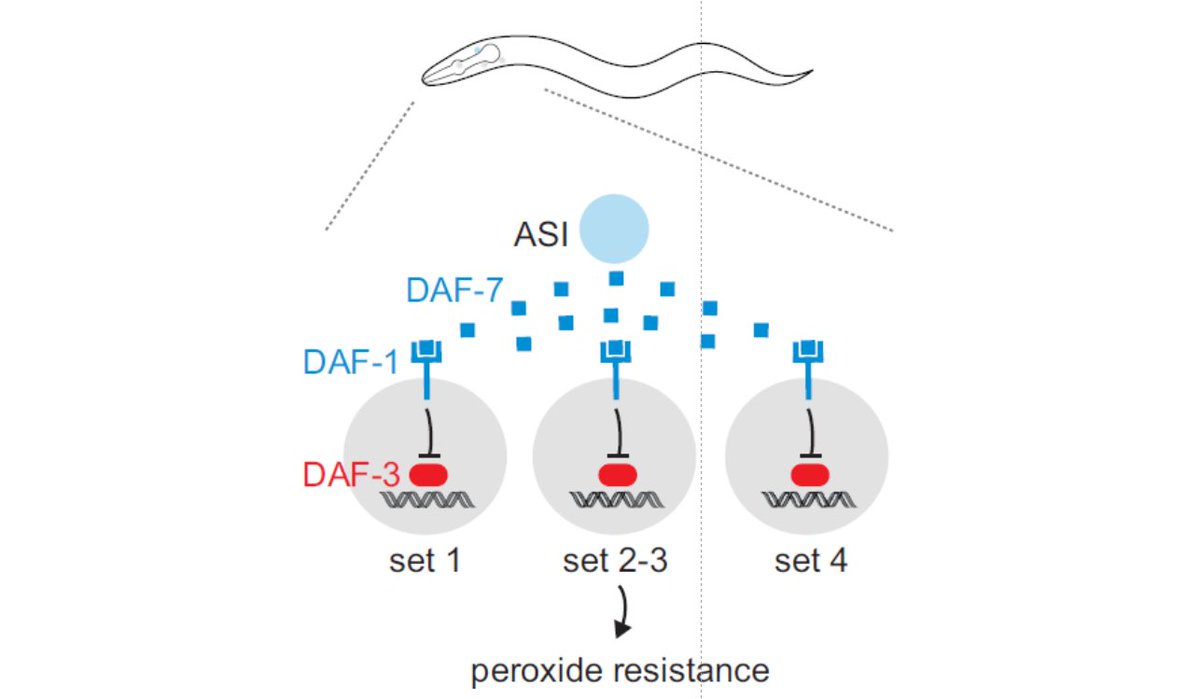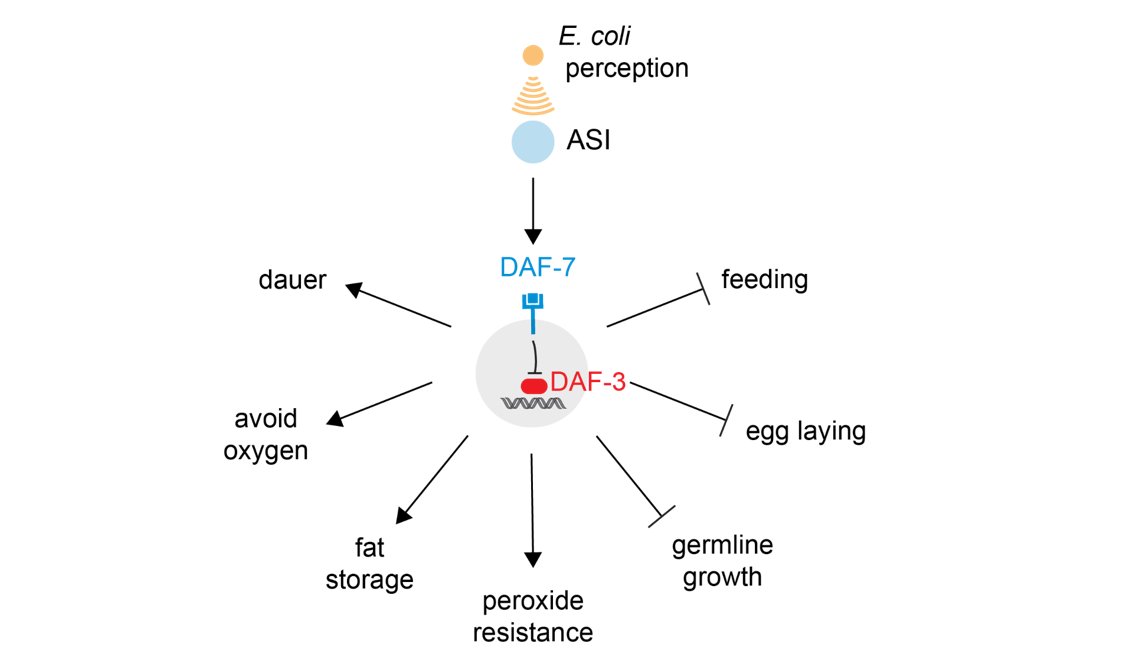We show that worms use their brain to decide whether to induce their hydrogen peroxide defenses or use those of E. coli.
Thread. 1/
elifesciences.org/articles/56186

How do the cells of an animal decide when to express these defenses? 5/
When is this regulatory system important? 14/

Frustratingly, we could not test if sensory signals that regulate tBuOOH resistance would protect worms from other peroxides, as most other peroxides are highly unstable explosives. 21/
C. elegans cells manage this challenge by relinquishing control of their cellular hydrogen peroxide defenses to a neuronal circuit in the brain. 27/


















